Films: The Journey of an Independent Filmmaker
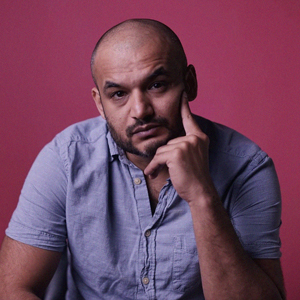
The Girl with the Om Tattoo is the kind of short film that reveals Paras Chaudhari, its writer, director, and producer, as one who makes movies for the sheer satisfaction of creating and telling stories on his own terms.
“Defying expectations is always the natural thing for me to do,” says Paras Chaudhari, summing up the unique subversiveness that characterizes his films. A case in point is The Girl with the Om Tattoo, his latest, a horror-thriller that is also a moving exploration of themes like tension between siblings and, more importantly, cultural appropriation and commodification in the world of yoga. As the writer, director, and executive producer of the film, as well as the actor who plays Varun in it, Paras is undoubtedly proud to see the movie he fought hard to fund and create gain some recognition at the Athens International Film + Video Festival in Ohio and the Atlanta Film Festival, where it premiered.
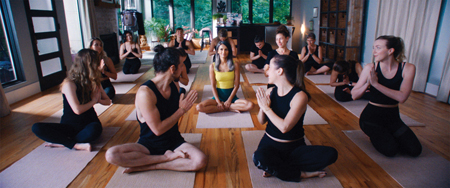
[Top] The Girl with the Om Tattoo is a horror-thriller that is also a moving exploration of themes like cultural appropriation and commodification in the world of yoga. (Film Still: Cinematographer Alexander Glustrom)
His earlier short film, Runs, in the Family, delved into the complicated dynamics and repressed dreams of an Indian American family, and was featured in the 2021 Atlanta Film Festival. Enzian, an esteemed Florida-based forum for independent cinema, also included it in the “Chhota Cinema: New Indian Shorts 2021” category of its South Asian Film Festival.
Paras has dabbled in filmmaking since 2007 when he co-created Astoria Park, a short film that explores conflict and racism experienced and perpetrated by South Asians as it plays out on a basketball court in Queens, New York. The film won the Orpheus Award for Best Short Film at the Los Angeles Greek Film Festival 2008. A music video he helped direct as part of a film education program with Frederick Douglass High School students was also featured in the Atlanta Film Festival 2019.
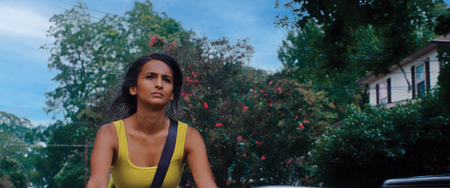
Rutu Chaudhari, Paras’s sister, has been a long-time collaborator in his film projects. As a real-life yoga teacher contending with the cultural issues at the core of Paras’s two recent films, Rutu serves as partial inspiration for the characters she plays in those films. But Rutu truly comes to the fore in The Girl with the Om Tattoo, in which she is the lead actor and producer.
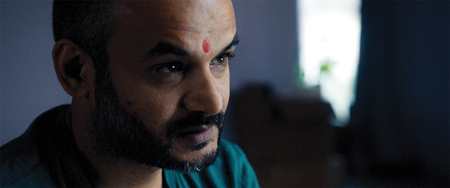 [Right] Rutu Chaudhari as Nalini and Paras as Varun in The Girl with the Om Tattoo. (Film Still: Cinematographer Alexander Glustrom)
[Right] Rutu Chaudhari as Nalini and Paras as Varun in The Girl with the Om Tattoo. (Film Still: Cinematographer Alexander Glustrom)
The filmmaking sibling duo spoke to Khabar about their previous work, their experiences as Indian American filmmakers, and the cultural questions at the core of The Girl with the Om Tattoo when Nalini, the protagonist, faces the closure of her yoga studio at the hands of the yoga influencer industry.
Nalani is not the kind of character we expect to see when we think of an Indian American woman or a yogi on screen. She has a sort of subversiveness that audiences might not expect. What was your goal in crafting a character who defies these unspoken expectations?
Paras: Defying expectations is always the natural thing for me to do, and demystifying the yogi was something exciting to craft. I think there is an underlying, simmering fire in this character. There are two sides to her: the studio owner and the individual who doesn’t have anyone to talk to about what she’s struggling with. What Nalini goes through is what happens when we don’t have an outlet.
Rutu: I also think minorities, women, women of color, and people generally don’t necessarily express the things that we’re going through. Being an Indian yoga teacher, I have witnessed so much corruption of it in the West. In a lot of ways, there’s not much to do about it other than keep my head down and continue the work and be as authentic and sincere in my approach to yoga as I can. There’s undoubtedly some frustration, anger, and emotionality that comes with seeing things that are just utterly disrespectful or appropriative. To have had the opportunity to express those things that I never would actually do was beautiful. With acting, you get to play these emotions and push the limits of what you are willing to do.
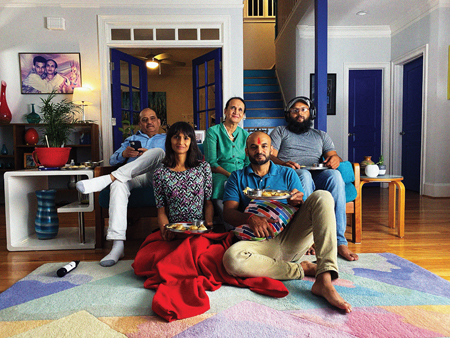
[Top] ] A still from Runs, in the Family. (Photo: Luciano Giarrano)
How do you both wrestle with that question of cultural appropriation and where to draw the line?
Rutu: It’s challenging because it isn’t black and white. The appreciation of yoga, the acknowledgment of it, and the study of it is just a beautiful thing, and so is the expansion of it. You think about how yoga in India used to be exclusively for men and how that history has evolved, and you see its broadness and accessibility. I’m a proponent of the accessibility of yoga and making sure everyone has access to it. But when does that start to look like it’s being disrespectful to the practice itself or the community? It’s hard to determine that.
Paras: I think that’s what the film is exploring: the question itself. It’s not answering it. Nalani’s going through this inner struggle of: where’s the line?
Rutu: We had a few white women in the screening who were either doing yoga or teaching yoga and left with a sense of “I need to think about how I approach this,” and that’s wonderful!
Many people go into films looking for “good representation,” but what is so interesting about your film is that Nalani and Varun are not good role models. What is your take on “good representation”? What are you putting out through this film that audiences would not find when they go in with that expectation?
Paras: I find the concept of good representation silly. All representation is important. For an upcoming feature, my lead character, Vikram Varma, the head of a major film studio in Atlanta, is a very depraved character. For me, moving forward is telling stories that place us in positions that are not necessarily good representations.
Rutu: For me, this has been such a journey. There’s no way people aren’t going to associate this character with me. There’s so much congruence—I’m a yoga teacher, I have a yoga studio, and I have these challenges. I have definitely struggled with how I was being represented, and I had to work through thinking: “This character has a violent streak, and she’s smoking weed. Do I want that to be out there representing me? How 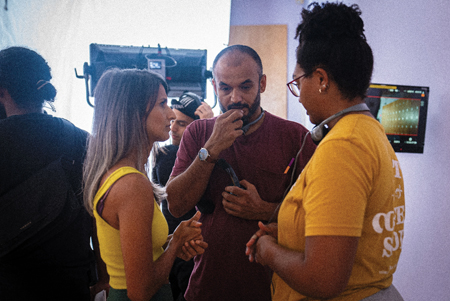 might that impact my own career?” Paras reminded me that it’s drama, we’re telling a story, and you can’t stay in a comfortable place to tell a story that challenges people. As uncomfortable as I may get with my own sense of vulnerability and exposure, it’s still an important story that isn’t about me; it’s about a larger issue that many people can relate to. Even non-Indian yoga teachers and others who are seeing this happen are like, “There’s something problematic going on here.”
might that impact my own career?” Paras reminded me that it’s drama, we’re telling a story, and you can’t stay in a comfortable place to tell a story that challenges people. As uncomfortable as I may get with my own sense of vulnerability and exposure, it’s still an important story that isn’t about me; it’s about a larger issue that many people can relate to. Even non-Indian yoga teachers and others who are seeing this happen are like, “There’s something problematic going on here.”
[Right] Paras, the director (Photo: Blake Bodden)
But also, we as Indians are very conditioned to think, “What will people think?” so having to go through that for myself and letting that go was great. There was a surrender and a freedom that comes with not caring about what people think because who I am and how I am in the world is enough.
What has your experience been as an independent filmmaker of Indian origin? Do you feel others pigeonhole your work by only seeing it as an Indian story?
Paras: I recently made a Southern Gothic film about characters who live in the Deep South. My sister and I played siblings in it, and there was no touch on Indianness or culture at all. That’s 90 percent of where I live as a writer: where the characters will have an Indian name, and that’s mostly their only connection to the culture. I don’t see myself as an Indian filmmaker.
How do you balance your interest in portraying aspects of Indian culture with that desire to be seen as just a filmmaker and not just an Indian or Indian American filmmaker?
Paras: I think that for me, it’s ultimately about not caring how I’m perceived because it will change throughout my career. In Runs, in the Family and The Girl with the Om Tattoo, there are a lot of cultural ties. In the next project that I just mentioned, with the Vikram Varma character, there’s no cultural talk, there’s no mention of anybody being Indian. It’s just pure drama with characters in the room that happen to be Indian. That’s how I reconcile the two: I do what’s real to me because I know who I am.
How was the experience of attending Sundance and being a part of the 1497 South Asian Lodge?
Rutu: It was wonderful to be surrounded by so many creative Indians telling stories that were not just India-focused but also stories that needed to be told. It was an inspiring, encouraging experience. The fact that Sundance had a lodge for South Asians is a big deal. I’m very excited, and it’s long overdue.
Paras: It was a beautiful experience for me as well. There was a lot of reuniting for me, reconnecting with the South Asian filmmaking community in New York from 2000 to 2015. It was very cathartic because, in the early 2000s, we were all trying to make this happen. Then we went our separate ways and kept planting those seeds on our own. Being at the lodge... it was what we had envisioned.
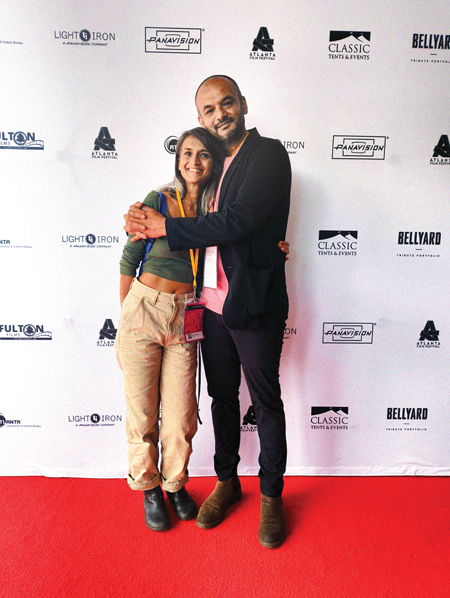 When did you realize that you wanted to become a filmmaker?
When did you realize that you wanted to become a filmmaker?
Paras: I was a huge Knicks fan and always wanted to be the first Indian in the NBA. I played basketball a lot when we lived in Queens, New York. There were Indians everywhere on those basketball courts. So, a friend, Chrysovalantis Stamelos, whom I used to watch Bollywood movies with, and I thought, “Wouldn’t it be funny to make a movie about Indians playing basketball?” He worked at MTV Studios and was able to borrow equipment for us to make a film. It was pretty clear by the time high school rolled around that I wasn’t going to play for the Knicks. So, the next best thing for me was to play a character who is known for playing basketball, and that just sparked everything.
What is your advice for people who are trying to break into filmmaking and acting?
Paras: Don’t think of it as trying to break in because it is damn near impossible. I’m still trying to break in 20 years later. I remind myself, Rutu reminds me, and my friends remind me all the time that we’re in it to create something that offers some catharsis within ourselves. If you’re doing that and being true to yourself every time, the rest will hopefully come.
[Left] Paras and Rutu at the Atlanta Film Festival.(Photo: Hannah Eve)
Rutu: At the very least, express yourself and your truth; by doing that you’re getting yourself out there. Hopefully, things come to fruition, but at the very least, you’re being honest and authentic and doing the thing that’s calling you, and that in itself is enough.
The Girl with the Om Tattoo should be available to view on the Tuareg Film Corp. YouTube channel after its film festival run is complete. Bhavana Kunnath, a contributing writer for Khabar, is a student at Oglethorpe University. She can be reached at kunnathbhavana@gmail.com.
Enjoyed reading Khabar magazine? Subscribe to Khabar and get a full digital copy of this Indian-American community magazine.
blog comments powered by Disqus










